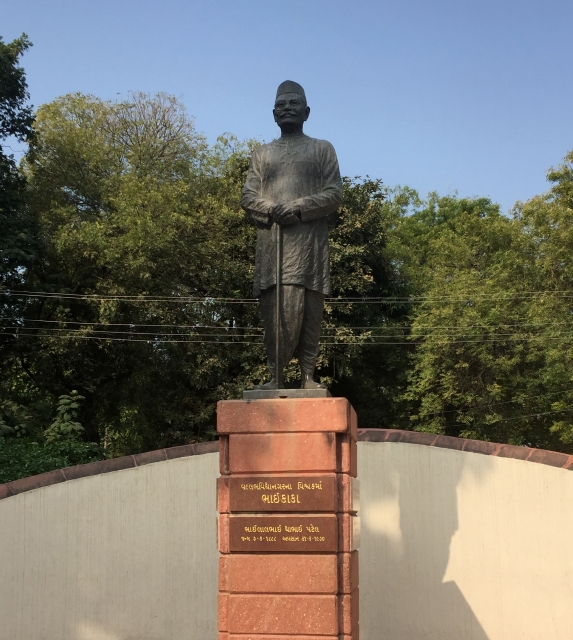Next year, the world’s largest democracy will head to the polls. Narendra Modi’s dominant ethnomajoritarian Bharatiya Janata Party (BJP) and its allies will seek to win a third straight victory in India’s General Election. With a third consecutive mandate from the ballot box, the BJP would be poised the wholescale transformation of India into a Hindu Rashtra (Nation) in which the Muslim minority of over 200 million people will be further vilified and repressed. Political scientist Suhas Palshikar calls the present a new period of one-party dominance in Indian politics, invoking an earlier term used to describe the Indian National Congress during the 1950s and 1960s. The 26 opposition parties that comprise the Indian National Developmental Inclusive Alliance (INDIA) aim to prevent this from happening. The stakes are clear.
At this crucial crossroads, it is worth reflecting upon the history of one opposition party during the original era of one-party dominance, discussed in my book Toward a Free Economy: Swatantra and Opposition Politics in Democratic India. In 1967, when Congress suffered its greatest setbacks and lost power in seven out of sixteen states, it was India’s Swatantra Party that emerged as the second largest party by seats in the Lok Sabha. The party also formed the official opposition in three states and led a brief coalition government in Orissa. Although Swatantra was a conservative right-wing formation, a few of its commitments deserve the attention of even the more progressively-minded.
The core of the Swatantra ideology was what its leaders called “free economy” which went against the conventional wisdom of state-led development championed by Prime Minister Jawaharlal Nehru’s Congress Party. Although India was free from the British Raj, the Swatantra leaders concluded, it was living in a ‘permit-and-license raj.’ Today, this term is used as an epithet to describe the red tape associated with the pre-liberalization Indian economy. But at the time, it was coined to suggest the risk of India’s descent into an oligarchy of bureaucrats in charge of distributing licenses and permits, big businesses who financed the ruling party, and politicians from the ruling party. In today’s India, big business’ hold on politics has further increased with the elimination of caps on corporate donations, the widening of the ambit of foreign firms that could donate to political parties, the relaxation of donor reporting requirements, and the introduction of tax-free electoral bonds that allow anonymous donations. The rising fiscal deficit has prompted the Government to raid the central bank’s reserves and compromise its independence.
Swatantra embraced regional diversity. The party platform was devised by leaders from numerically small but influential communities in Southern and Western India. In the state of Tamil Nadu, it helped forge a coalition in 1967 that brought down the Congress government in favor of a regional party. The Congress has since not returned to power in that state, one of India’s most well-developed. Swatantra also resisted the imposition of Hindi as a national language, suggesting practically that English should continue to be used in matters of government and to ease inter-state interaction.
Swatantra’s founders believed in and sought to uphold their conservative reading of the Indian Constitution but were strong supporters of its demand for secularism and helped author the section on fundamental rights. Four of its leaders served on the Constituent Assembly and considered that Congress’ attempts at land reform compromised Article 31, the right to property. After the nationalization of major public sector banks in 1969, a senior party leader successfully moved the Supreme Court to pay compensation to bank shareholders. By contrast, in the Indian right-wing today, constitutionalism is something to be overcome rather than followed. Indeed, the Chairman of the Prime Minister’s Economic Advisory Council believes the Constitution should be scrapped entirely.
Swatantra further took pains to communicate and politicize discontent with economic policy. This came from a belief that the Indian electorate deserved robust economic growth and ought to take government to task when it failed to deliver this. The party ran anti-inflation and anti-excess taxation days and communicated economic principles through an extensive pamphlet literature. Leaders wrote frequently in the print public sphere about these issues.
In contrast to the right-wing today, Swatantra broadly steered clear of religious sectarianism. Key leaders like C. Rajagopalachari, N.G. Ranga, and Minoo Masani had marched alongside Gandhi in the freedom struggle and embraced his vision of inter-religious unity. While there were majoritarian elements in the party like K.M. Munshi, their agendas were kept in check. Rajagopalachari in fact wrote to Jana Sangh co-founder and Organiser editor K.R. Malkani to ask him to stop running articles about warlike Muslim kings and tyrants: “Not only do such stories serve no current purpose, but they do great harm,” he cautioned.
Swatantra was undoubtedly a party of the privileged. It delivered a message that was both gendered and wilfully insensitive to distinctions of caste. Despite attempts to translate ideas into vernacular idioms, it did not capture the popular imagination. So, its disintegration by the 1970s is not all that surprising. But any realistic assessment of Indian politics as it is rather than as we wish it to be would acknowledge the predominance of conservative interests. Projects like Swatantra’s can help us imagine alternative solidarities and possibilities, even if they stand far apart from our utopias.
This essay is adapted from a piece originally published by Hindustan Times.
Aditya Balasubramanian is lecturer in economic history at the Australian National University.

